A-Fib (Atrial Fibrillation)
Medically reviewed by Drugs.com. Last updated on Aug 4, 2025.
AMBULATORY CARE:
Atrial fibrillation (A-fib)
is an irregular heartbeat. It reduces your heart's ability to pump blood through your body. A-fib may come and go, or it may be a long-term condition. A-fib can cause life-threatening blood clots, stroke, or heart failure. It is important to treat and manage A-fib to help prevent these problems.
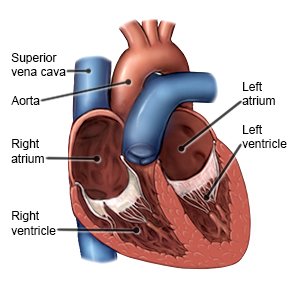 |
Common signs and symptoms include the following:
- A heartbeat that races, pounds, or flutters
- Weakness, severe tiredness, or confusion
- Feeling lightheaded, sweaty, dizzy, or faint
- Shortness of breath or anxiety
- Chest pain or pressure
Call your local emergency number (911 in the US) or have someone call if:
- You have any of the following signs of a heart attack:
- Squeezing, pressure, or pain in your chest
- You may also have any of the following:
- Discomfort or pain in your back, neck, jaw, stomach, or arm
- Shortness of breath
- Nausea or vomiting
- Lightheadedness or a sudden cold sweat
- You have any of the following signs of a stroke:
- Numbness or drooping on one side of your face
- Weakness in an arm or leg
- Confusion or difficulty speaking
- Dizziness, a severe headache, or vision loss
Seek immediate care if:
- Your arm or leg feels warm, tender, and painful. It may look swollen and red.
- Your heart rate is more than 110 beats per minute.
- You are short of breath, even at rest.
Call your doctor or cardiologist if:
- You have new or worsening swelling in your legs, feet, ankles, or abdomen.
- You have questions or concerns about your condition or care.
Treatment for A-fib:
Conditions that cause A-fib, such as thyroid disease, will be treated. You may also need any of the following:
- Heart medicines help control your heart rate or rhythm. You may need more than 1 medicine to treat your symptoms.
- Antiplatelet or blood thinner medicines help prevent blood clots and stroke.
- Cardioversion is a procedure to return your heart rate and rhythm to normal. It can be done using medicines or electric shock.
- A-fib ablation is a procedure that uses energy to burn a small area of heart tissue. This creates scar tissue and prevents electrical signals that cause A-fib. You may need this procedure more than 1 time. Ask for more information on A-fib ablation.
- A pacemaker may be inserted into your heart. A pacemaker is a device that controls your heartbeat. A pacemaker may be inserted during an ablation procedure or surgery. Ask your healthcare provider for more information on pacemakers.
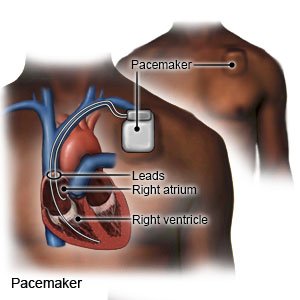
- Surgery may be needed if other procedures do not work. During surgery your healthcare provider will make cuts in the upper part of your heart. The provider will stitch the cuts together to create scar tissue. The scar tissue will prevent electrical signals that cause A-fib.
Treatment options
The following list of medications are related to or used in the treatment of this condition.
Manage or prevent A-fib:
- Get screening for A-fib, if recommended. Screening means you are checked for A-fib, even if you do not have signs or symptoms. Screening can find problems early so treatment can begin. Early treatment can save your life. Your healthcare provider will talk to you about the benefits and risks of screening. Screening may be recommended starting at age 50. Your provider may recommend regular screenings if you stay at high risk for A-fib.
- Know your target heart rate. Learn how to check your pulse and monitor your heart rate.
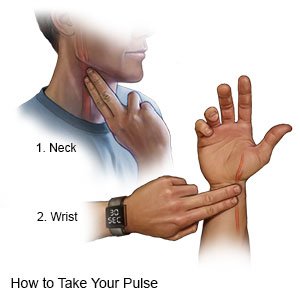
- Know the risks if you choose to drink alcohol. Alcohol can increase your risk for A-fib or make A-fib harder to manage. Ask your provider if it is okay for you to drink any alcohol. Your provider can help you set limits for the number of drinks you have in 24 hours and in a week. A drink of alcohol is 12 ounces of beer, 5 ounces of wine, or 1½ ounces of liquor.
- Do not smoke. Nicotine can cause heart damage and make it more difficult to manage your A-fib. Do not use e-cigarettes or smokeless tobacco in place of cigarettes or to help you quit. They still contain nicotine. Ask your provider for information if you currently smoke and need help quitting.
- Eat heart-healthy foods. Heart healthy foods will help keep your cholesterol low. These include fruits, vegetables, whole-grain breads, low-fat dairy products, beans, lean meats, and fish. Replace butter and margarine with heart-healthy oils such as olive oil and canola oil.
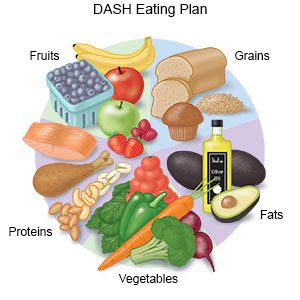
- Maintain a healthy weight. Ask your provider what a healthy weight is for you. Your provider can help you create a safe weight loss plan, if needed. Even a small goal of a 10% weight loss can improve your heart health.
- Get regular physical activity. Physical activity helps improve your heart health. Get at least 150 minutes of moderate aerobic physical activity each week. Your provider can help you create an activity plan.
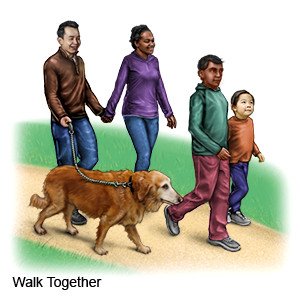
- Manage other health conditions. This includes high blood pressure or cholesterol, sleep apnea, diabetes, and other heart conditions. Take medicine as directed and follow your treatment plan. Your provider may need to change a medicine you are taking if it is causing your A-fib. Do not stop taking any medicine unless directed by your provider.
Follow up with your doctor or cardiologist as directed:
You will need regular blood tests and monitoring. Write down your questions so you remember to ask them during your visits.
© Copyright Merative 2025 Information is for End User's use only and may not be sold, redistributed or otherwise used for commercial purposes.
The above information is an educational aid only. It is not intended as medical advice for individual conditions or treatments. Talk to your doctor, nurse or pharmacist before following any medical regimen to see if it is safe and effective for you.
Learn more about A-Fib
Treatment options
Care guides
Symptoms and treatments
Medicine.com guides (external)
Further information
Always consult your healthcare provider to ensure the information displayed on this page applies to your personal circumstances.
